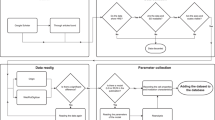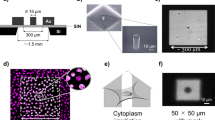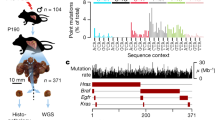Abstract
Non-malignant dermal fibroblast strains, cultured from affected members of a Li-Fraumeni syndrome (LFS) family with diverse neoplasms associated with radiation exposure, display a unique increased resistance to the lethal effects of gamma-radiation. In the studies reported here, this radioresistance (RR) trait has been found to correlate strongly with an abnormal pattern of post-gamma-ray DNA replicative synthesis, as monitored by radiolabelled thymidine incorporation and S-phase cell autoradiography. In particular, the time interval between the gamma-ray-induced shutdown of DNA synthesis and its subsequent recovery was greater in all four RR strains examined and the post-recovery replication rate was much higher and was maintained longer than in normal and spousal controls. Alkaline sucrose sedimentation profiles of pulse-labelled cellular DNA indicated that the unusual pattern of DNA replication in irradiated RR strains may be ascribed to anomalies in both replicon initiation and DNA chain elongation processes. Moreover, the RR strain which had previously displayed the highest post-gamma-ray clonogenic survival was found to harbour a somatic (codon 234) mutation (presumably acquired during culture in vitro) in the same conserved region of the p53 tumour-suppressor gene as the germline (codon 245) mutation in the remaining three RR strains from other family members, thus coupling the RR phenotype and abnormal post-gamma-ray DNA synthesis pattern with faulty p53 expression. Significantly, these two aberrant radioresponse end points, along with documented anomalies in c-myc and c-raf-1 proto-oncogenes, are unprecedented among other LFS families carrying p53 germline mutations. We thus speculate that this peculiar cancer-prone family may possess in its germ line a second, as yet unidentified, genetic defect in addition to the p53 mutation.
This is a preview of subscription content, access via your institution
Access options
Subscribe to this journal
Receive 24 print issues and online access
$259.00 per year
only $10.79 per issue
Buy this article
- Purchase on Springer Link
- Instant access to full article PDF
Prices may be subject to local taxes which are calculated during checkout
Similar content being viewed by others
Author information
Authors and Affiliations
Rights and permissions
About this article
Cite this article
Mirzayans, R., Aubin, R., Bosnich, W. et al. Abnormal pattern of post-γ-ray DNA replication in radioresistant fibroblast strains from affected members of a cancer-prone family with Li-Fraumeni syndrome. Br J Cancer 71, 1221–1230 (1995). https://doi.org/10.1038/bjc.1995.237
Issue Date:
DOI: https://doi.org/10.1038/bjc.1995.237
This article is cited by
-
Molecular cloning, genomic characterization and over-expression of a novel gene, XRRA1, identified from human colorectal cancer cell HCT116Clone2_XRR and macaque testis
BMC Genomics (2003)
-
Effects of the protein kinase inhibitors wortmannin and KN62 on cellular radiosensitivity and radiation-activated S phase and G1/S checkpoints in normal human fibroblasts
British Journal of Cancer (1999)
-
Radiation-induced G1 arrest is not defective in fibroblasts from Li-Fraumeni families without TP53 mutations
British Journal of Cancer (1999)



